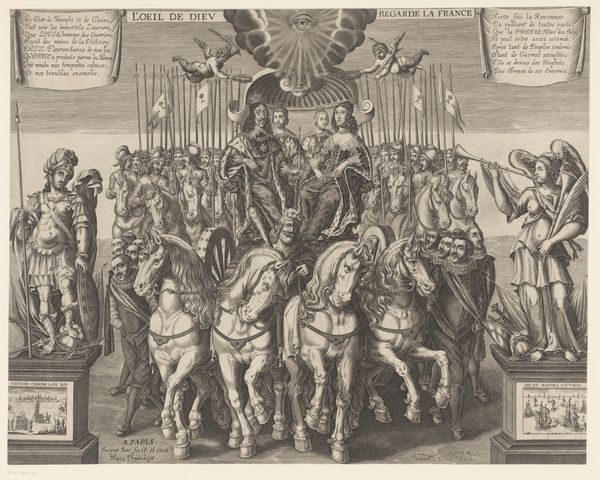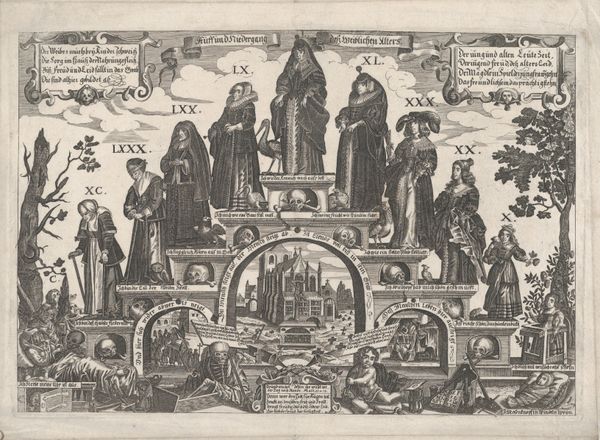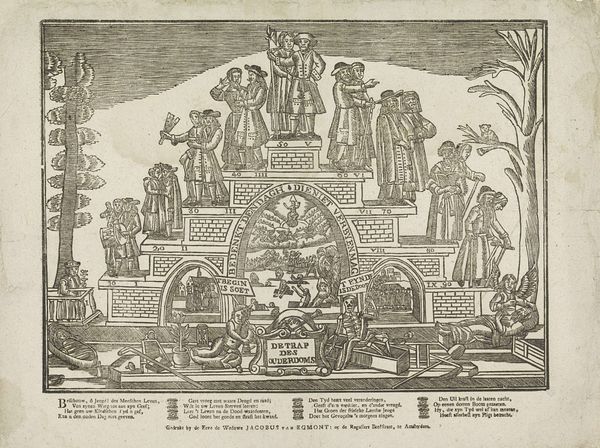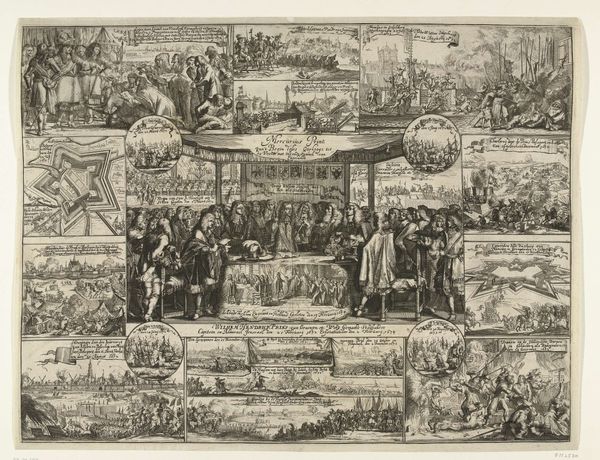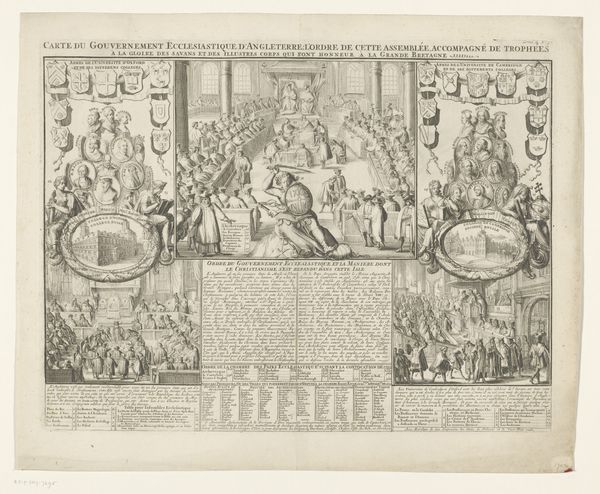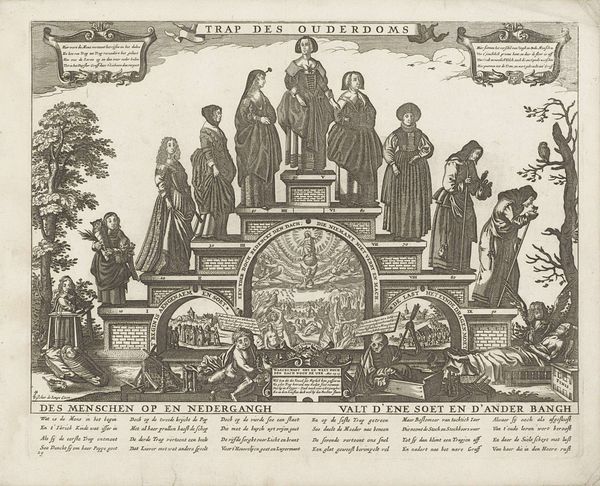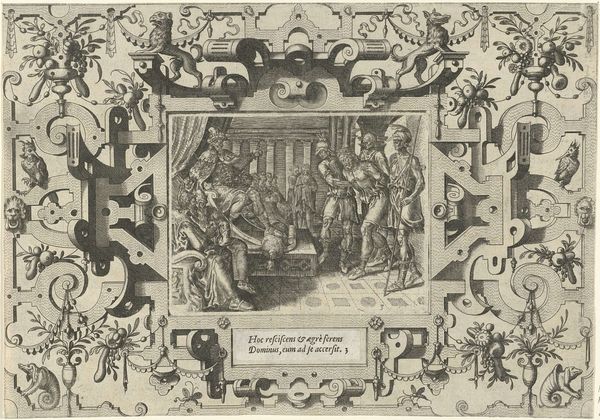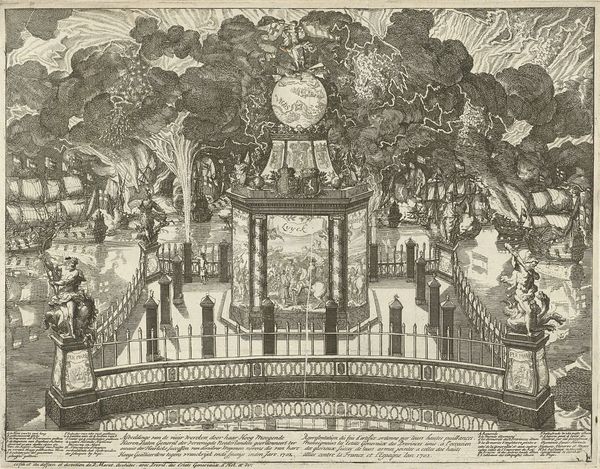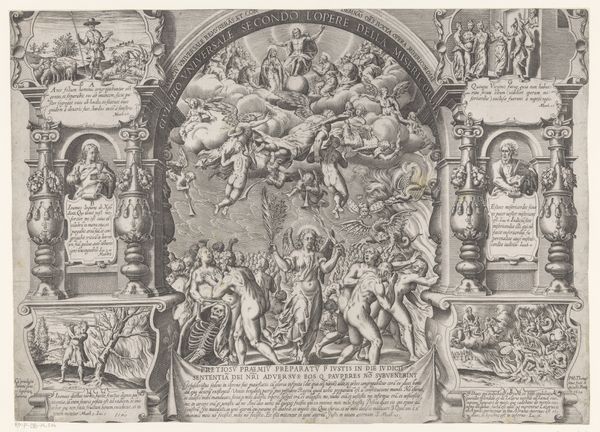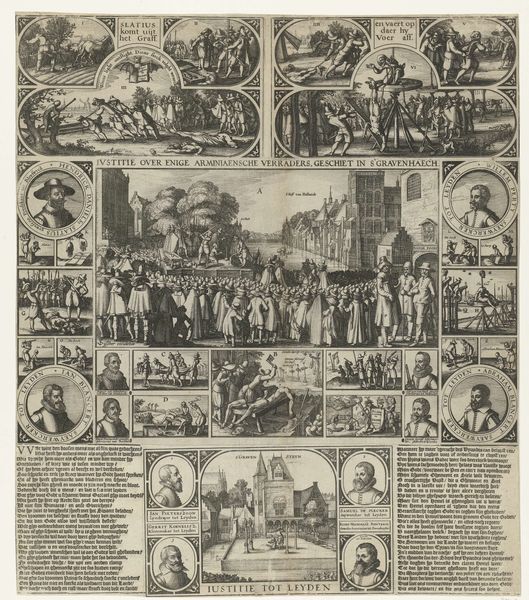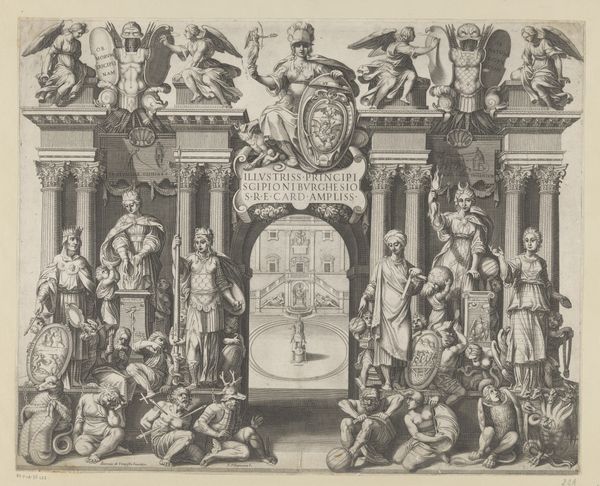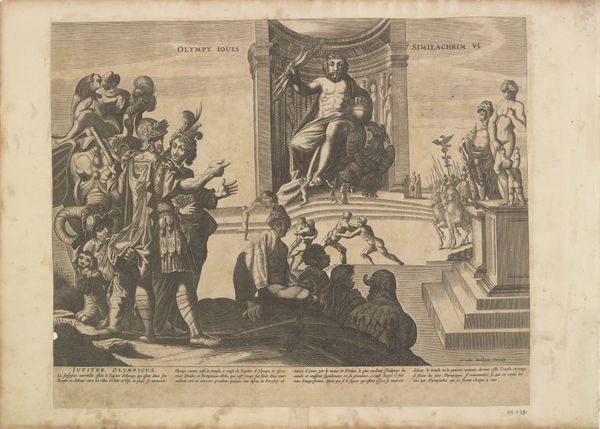
drawing, print, engraving
#
portrait
#
drawing
#
allegory
#
pen drawing
# print
#
figuration
#
vanitas
#
line
#
genre-painting
#
history-painting
#
engraving
Dimensions: Sheet: 13 in. × 16 15/16 in. (33 × 43 cm) Plate: 9 15/16 × 14 3/8 in. (25.3 × 36.5 cm)
Copyright: Public Domain
Curator: What a fascinating find. We’re looking at "The Eleven Ages of Man," an engraving likely dating from between 1609 and 1672, and created by Gerhard Altzenbach. It's currently held at The Met in New York. At first glance, what impressions does it leave you with? Editor: It's densely packed with figures, all these people laid out across what looks like stages. It immediately gives me a feeling of memento mori, a reminder of mortality. It has this allegorical sense, like looking at a procession or even a play that’s about to collapse in on itself. Curator: Precisely. It's a classic example of "vanitas," a reminder of the transience of life. You see eleven distinct stages presented almost like steps leading to the inevitable conclusion of death, each with accompanying imagery. These aren't mere portraits but rather symbolic representations of each decade of life. I wonder, who did such representation benefit and/or target? Editor: That is indeed something to question. You know, it is visually very structured, almost mathematical. It evokes the eras it embodies through clothes, objects, and how figures interact with one another—almost didactic with the way in which social expectations are delivered. There are babies, lovers, fighters, religious people, which is like a societal portrait from cradle to grave. But who decided which ages and corresponding societal norms should be considered. Curator: Good point. What this composition is communicating goes well beyond "life stages," to become this tool to reaffirm an ideological and social status-quo and ideal human and/or man—given there is only one "lady" or "woman"—that reflects gender roles during the 17th Century. Let's be mindful of this as a possibility in the art analysis and discussion. Editor: Of course. I also note the text accompanying each figure, perhaps further moralizing their journey. The composition has a life and logic of its own. So many elements are in play, and what is in plain sight requires one to analyze closely given the complexity and social commentaries it contains. It's also visually quite striking given the quality and detail achieved through the technique and production method that engravings offered at the time. It has this striking presence... Curator: It is indeed. This work really encapsulates many of the societal expectations and political considerations of the period it was created, raising pertinent issues that can speak to contemporary concerns today. A really wonderful exemplar to end with. Editor: I concur. The artwork is definitely an invitation to reflect on the intricate ways in which our societies are coded, designed, or even illustrated.
Comments
No comments
Be the first to comment and join the conversation on the ultimate creative platform.
